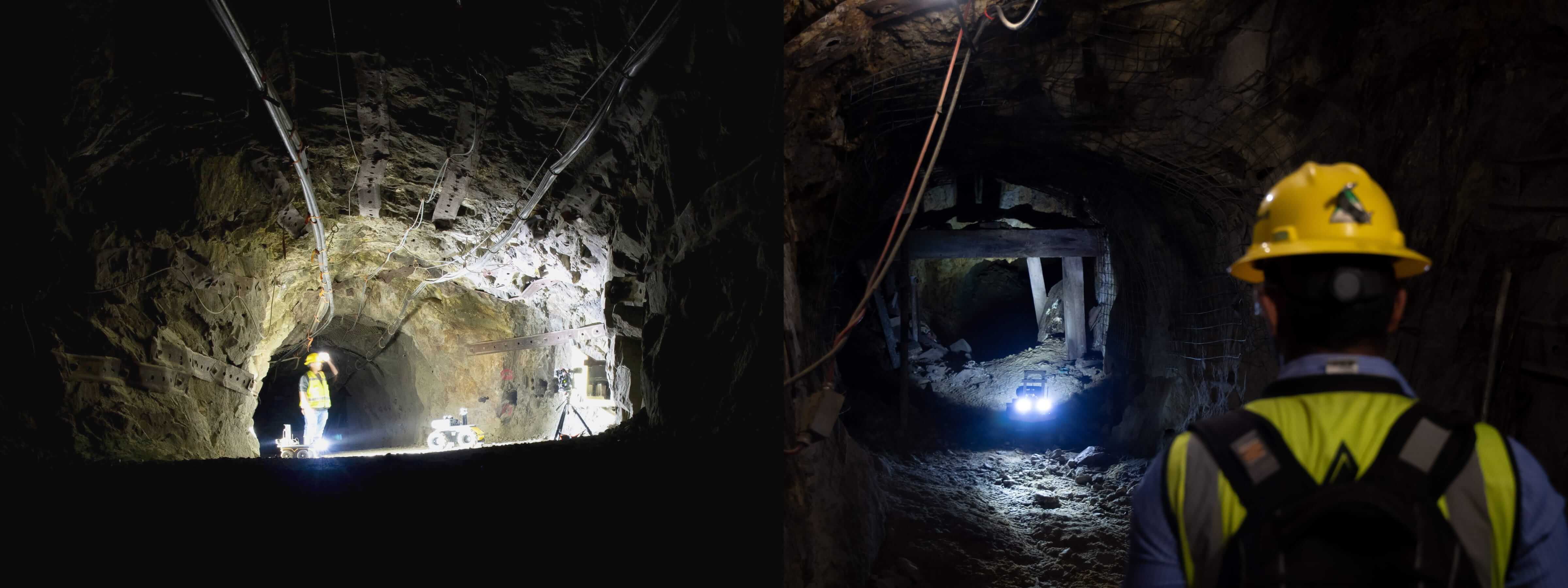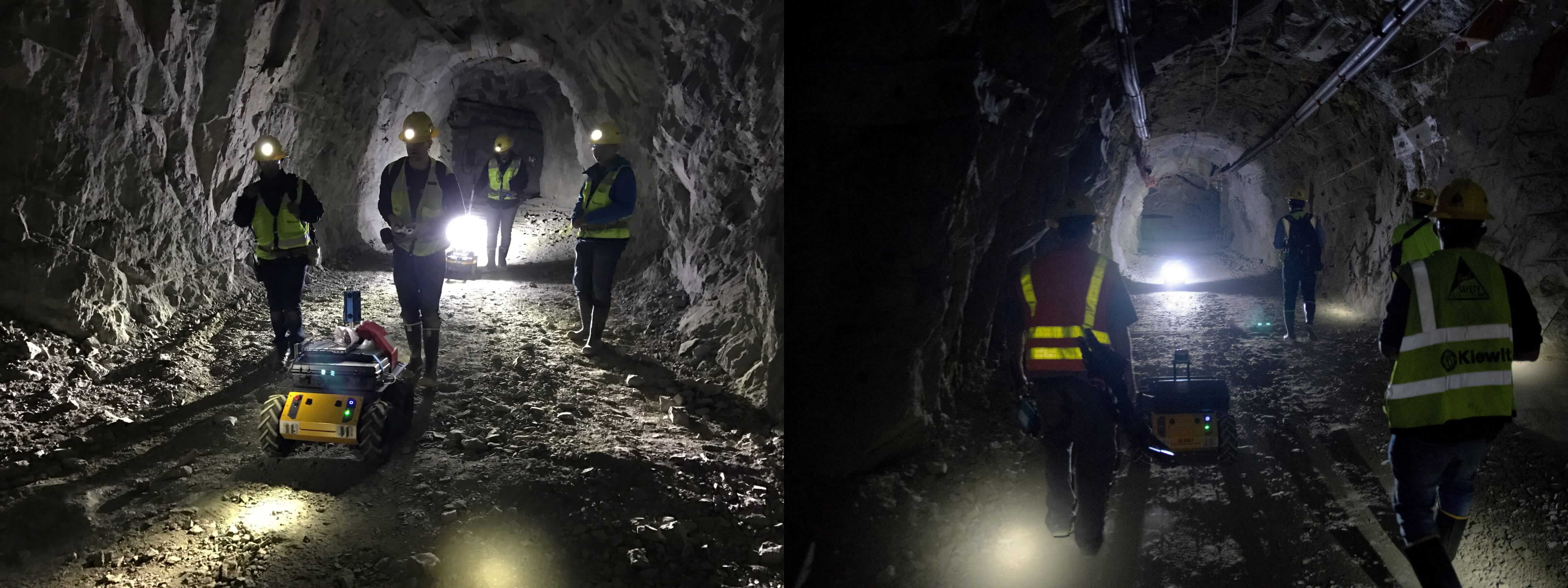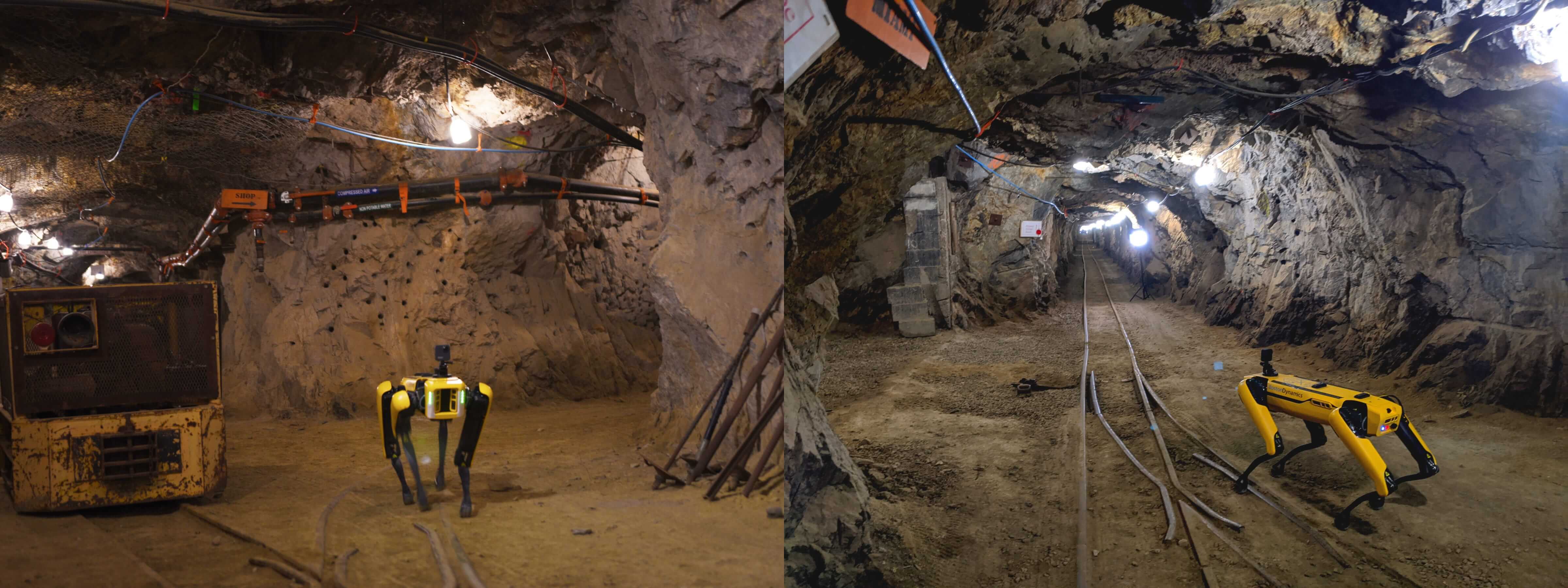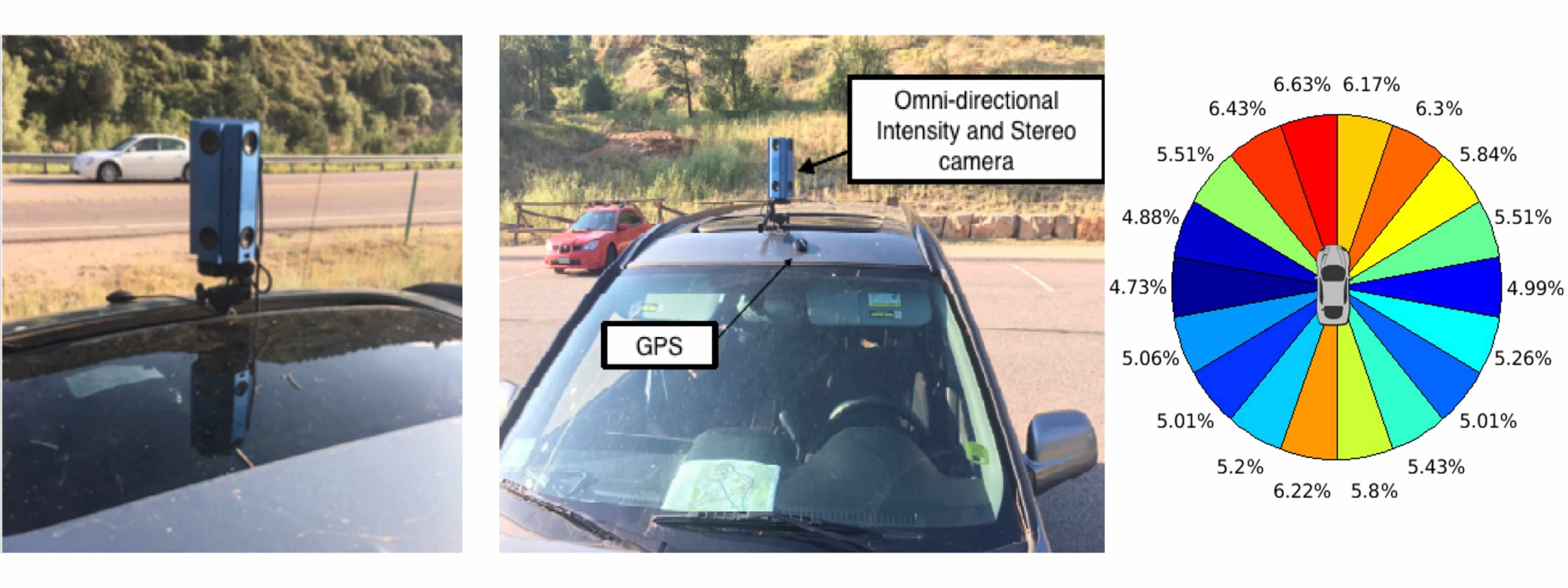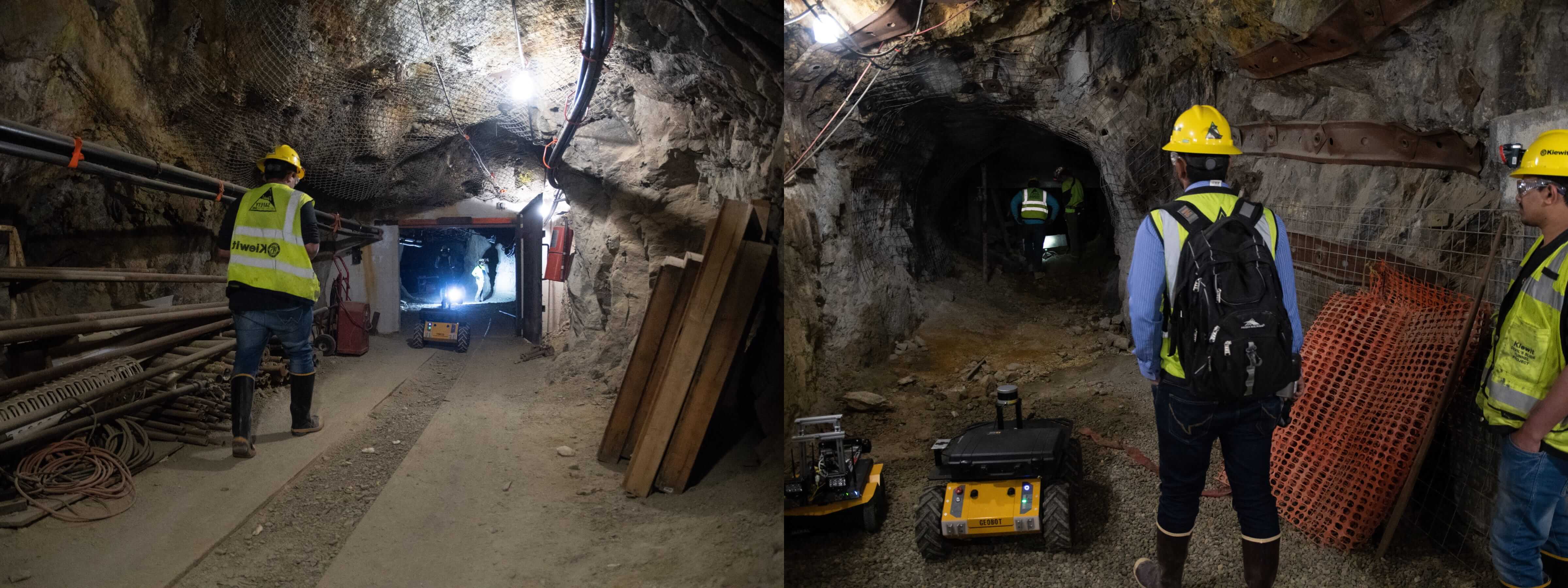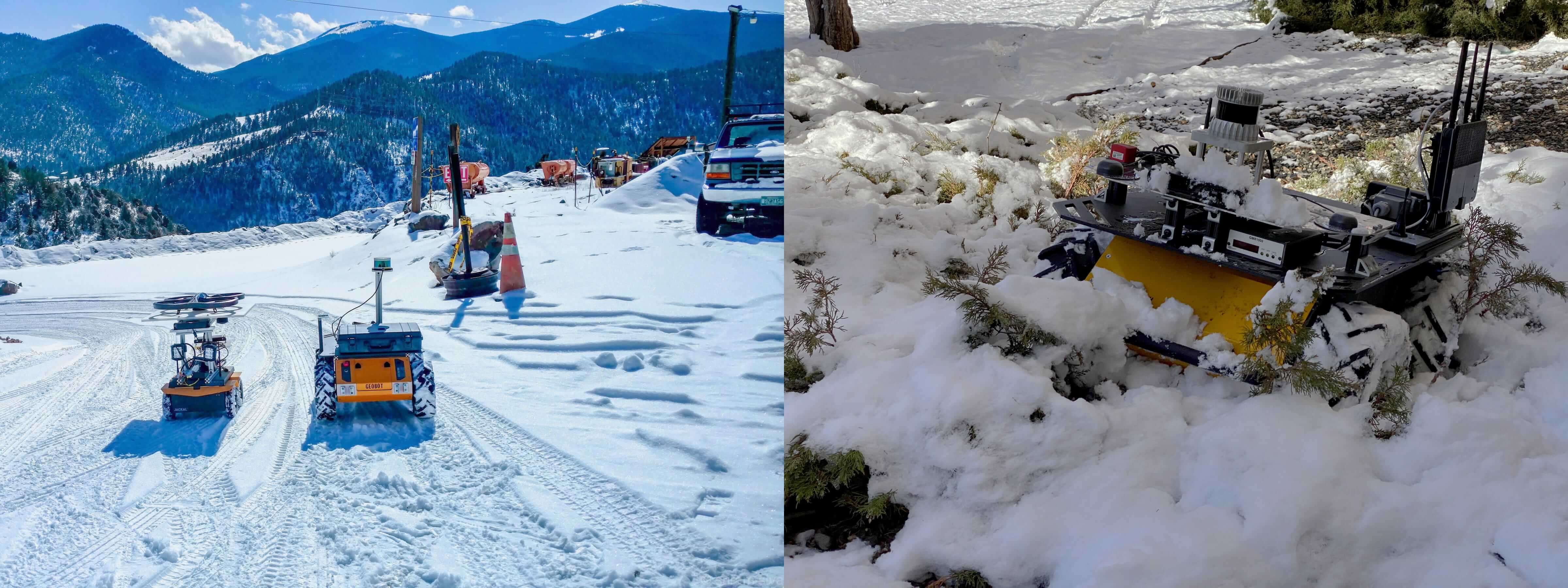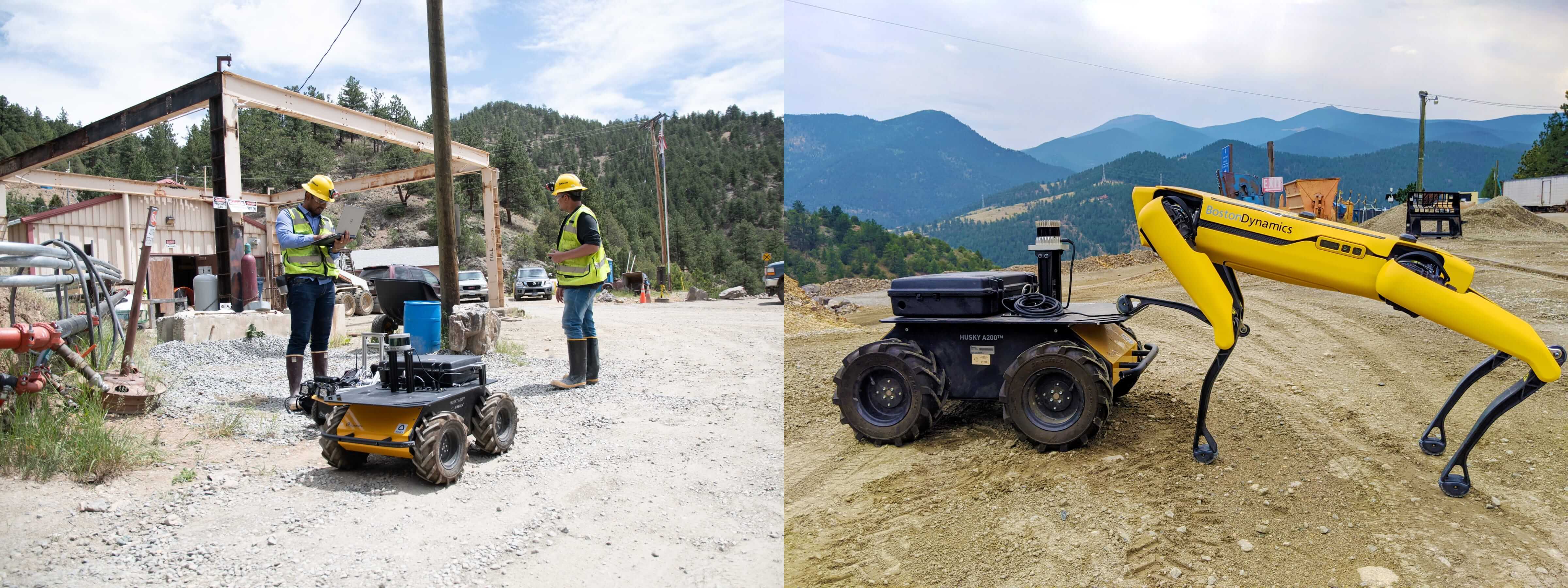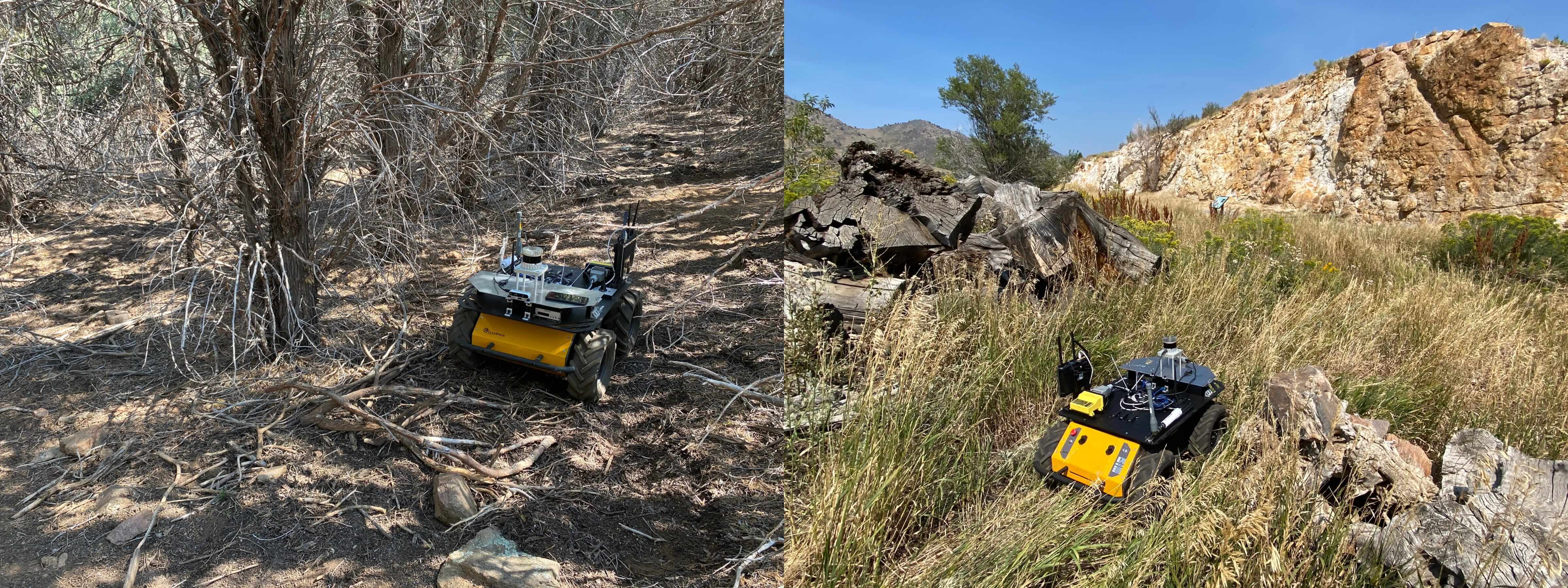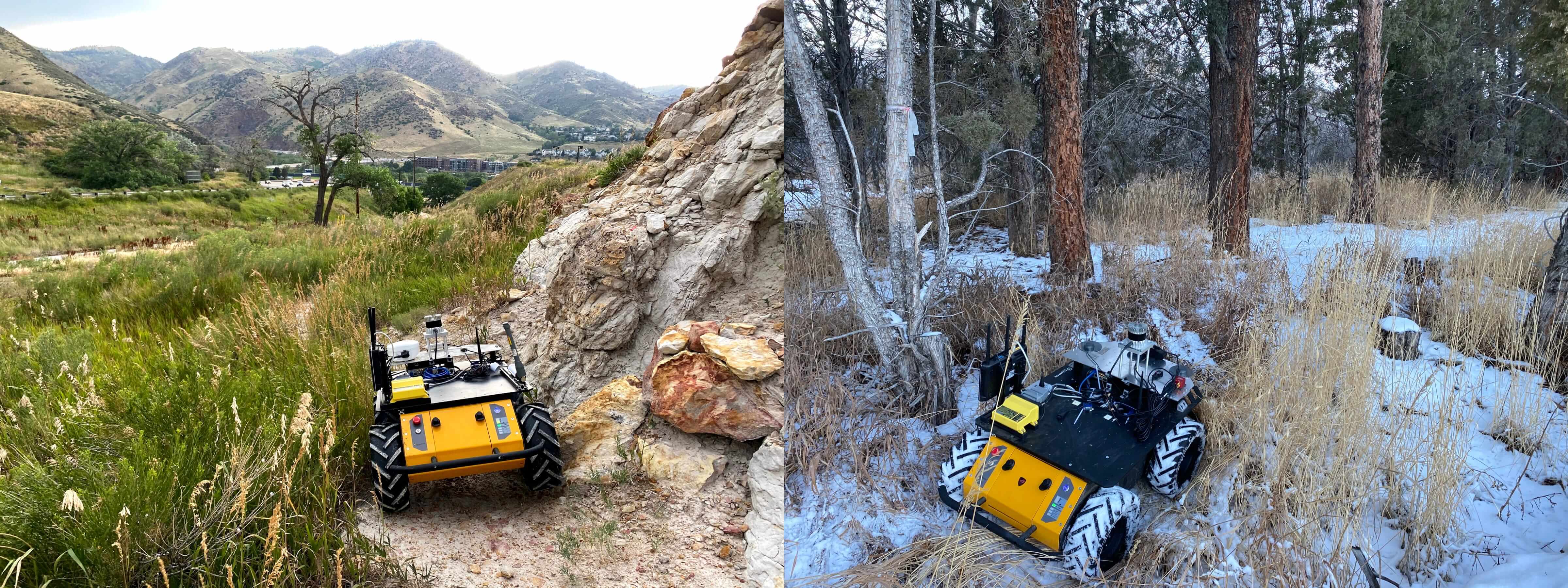Sriram Siva
Ph.D. Researcher in Robot Autonomy, ML & AI (CS)
Robot Adaptation and Learning | Robot Self-Reflection
Colorado School of Mines

Welcome! I am a Ph.D. researcher in Robotics (CS) at the Colorado School of Mines (Mines), supervised by Dr. Hao Zhang, where I work in the Human Centered Robotics Lab. My core research is on enhancing robot autonomy in dynamic and uncertain environments, using machine leanring and AI, especially robot learning. I am presently funded by US Army Research Lab's SARA and NSF's S&AS.
Before going to Mines, I received my B.S. in Mechanical Engineering at Amrita University in 2016, where I worked with Dr. Madhu Meher and Dr. Anand Ramachandran on developing advanced fault-tolerant controls for UAVs.
I am currently seeking full-time research positions in industry. Please check out my CV or get in touch!Research
Motivated by the promise of robots towards a sustainable human future, my research goal is to develop highly intelligent, capable, and resilient mobile robots that can be robustly deployed in real-world environments to carry out time-critical and safety-critical missions successfully and efficiently. My doctoral research has been towards performing fundamental and applied research in robotics and machine learning, i.e., robot learning, with a specific focus on developing methods that tightly integrate perception, learning, and navigation. The breadth of my research spans theoretical and system development on computer vision, localization and mapping, motion planning and collaborative autonomy in dynamic unstructured environments. The algorithms that I develop, utilize and extend theory from deep learning, convex optimization, online learning, reinforcement learning, and optimal control. As a roboticist with unique expertise evenly grounded in robot learning for perception, behavior adaptation and navigation, and vast experience working with real-world problems in the field of robot autonomy, I build advanced robot platforms with complex sensing systems, design sophisticated robot learning algorithms, and set up standardized metrics to create highly capable and intelligent robot mobility systems for land and air. Learn more about my my research here.
Awards
- Best Paper Award on Cognitive Robotics, Finalist, IEEE/RSJ International Conference on Intelligent Robots and Systems (IROS), 2021
- Best Poster Presentation, Runner-up, at CSM C-MAPP, 2020
- Best Fixed Wing UAV Design and Flying, Winner, Airstrike-2015, Indian Institute of Space and Technology
- Academic Excellence Scholarship at Amrita Univesity, 2014
Selected Recent Publications
Check out my full list of publications. IROS
IROS
NAUTS: Negotiation for Adaptation to Unstructured Terrain Surfaces
IEEE/RSJ International Conference on Intelligent Robots and Systems (IROS), 2022
When robots operate in real-world off-road environments with unstructured terrains, the ability to adapt their navigational policy is critical for effective and safe navigation. However, off-road terrains introduce several challenges to robot navigation, including dynamic obstacles and terrain uncertainty, leading to inefficient traversal or navigation failures. To address these challenges, we introduce a novel approach for adaptation by negotiation that enables a ground robot to adjust its navigational behaviors through a negotiation process. Our approach first learns prediction models for various navigational policies to function as a terrain-aware joint local controller and planner. Then, through a new negotiation process, our approach learns from various policies' interactions with the environment to agree on the optimal combination of policies in an online fashion to adapt robot navigation to unstructured off-road terrains on the fly. Additionally, we implement a new optimization algorithm that offers the optimal solution for robot negotiation in real-time during execution. Experimental results have validated that our method for adaptation by negotiation outperforms previous methods for robot navigation, especially over unseen and uncertain dynamic terrains.
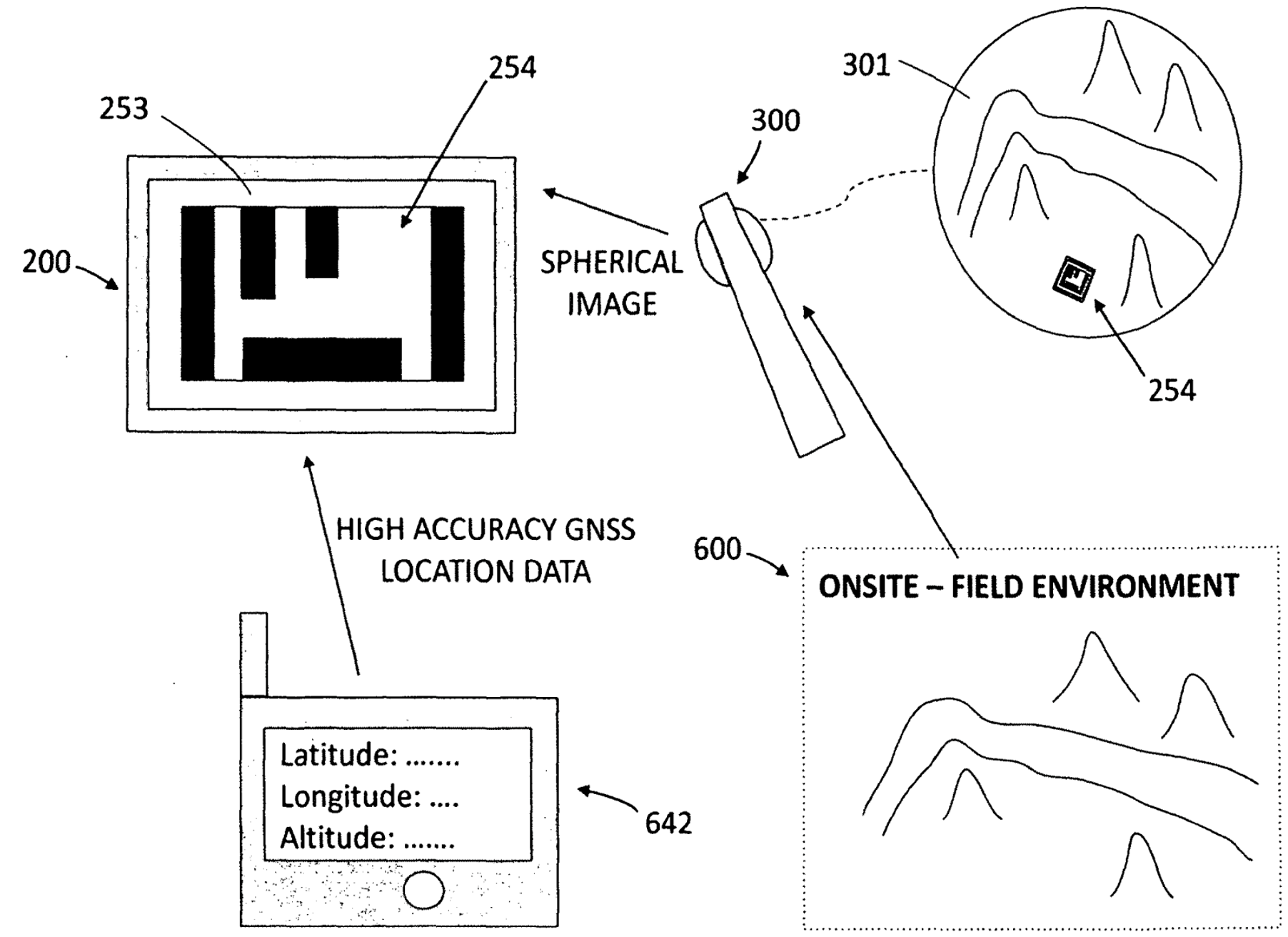 US20200389601A1
US20200389601A1
Spherical Image Based Registration and Self-Localization for Onsite and Offsite Viewing
United States Patent: US11418716B2, Active: August 16, 2022.
Systems and methods for image registration and self-localization for onsite and offsite viewing are provided. In one aspect, systems and methods for spherical image based registration and self-localization for onsite and offsite viewing, such as augmented reality viewing and virtual reality viewing, are provided. In one embodiment, a system includes a portable electric device fitted with a device camera, an external omnidirectional spherical camera, and a remote server. In one embodiment, a method of use employs a set of fiducial markers inserted in images collected by a spherical camera to perform image registration of spherical camera images and device camera images.
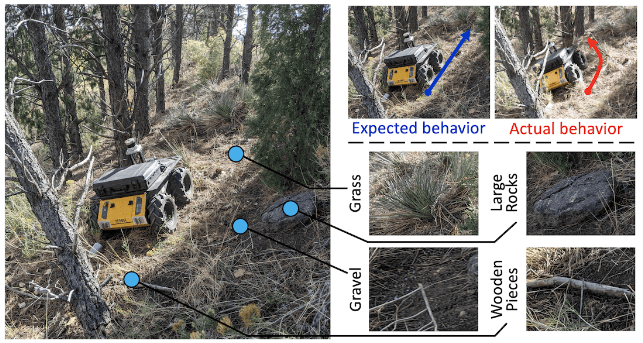 CoRL
CoRL
Enhancing Consistent Ground Maneuverability by Robot Adaptation to Complex Off-Road Terrains
Conference on Robot Learning (CoRL), 2021
Selected for Oral Presentation (6.5% acceptance)
Terrain adaptation is a critical ability for a ground robot to effectively traverse unstructured off-road terrain in real-world field environments such as forests. However, the expected or planned maneuvering behaviors cannot always be accurately executed due to setbacks such as reduced tire pressure. This inconsistency negatively affects the robot’s ground maneuverability and can cause slower traversal time or errors in localization. To address this shortcoming, we propose a novel method for consistent behavior generation that enables a ground robot’s actual behaviors to more accurately match expected behaviors while adapting to a variety of complex off-road terrains. Our method learns offset behaviors in a self-supervised fashion to compensate for the inconsistency between the actual and expected behaviors without requiring the explicit modeling of various setbacks. To evaluate the method, we perform extensive experiments using a physical ground robot over diverse complex off-road terrain in real-world field environments. Experimental results show that our method enables a robot to improve its ground maneuverability on complex unstructured off-road terrain with more navigational behavior consistency, and outperforms previous and baseline methods, particularly so on challenging terrain such as that which is seen in forests.
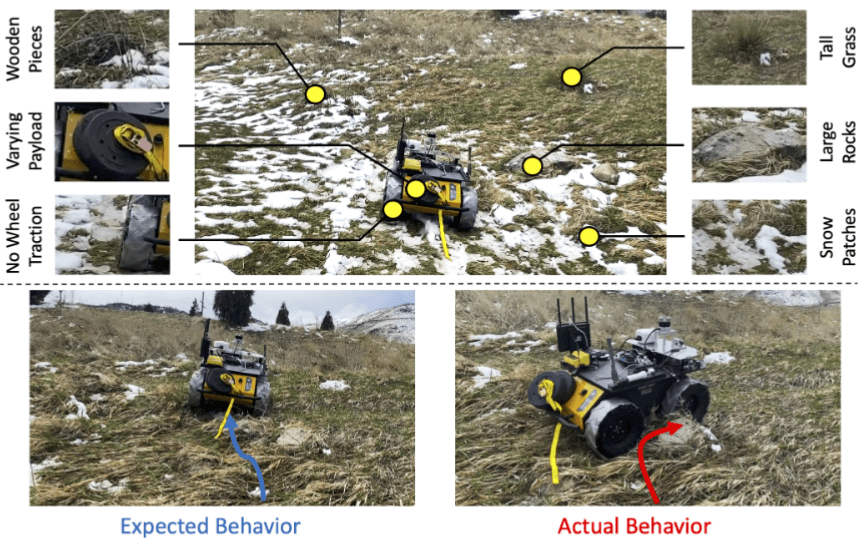 IJRR
IJRR
Self-Reflective Terrain-Aware Robot Adaptation for Consistent Off-Road Ground Navigation
The International Journal of Robotics Research (IJRR), Under Review.
Ground robots require the crucial capability of traversing unstructured and unprepared terrains and avoiding obstacles to complete tasks in real-world robotics applications such as disaster response. When a robot operates in off-road field environments such as forests, the robot's actual behaviors often do not match its expected or planned behaviors, due to changes in the characteristics of terrains and the robot itself. Therefore, the capability of robot adaptation for consistent behavior generation is essential for maneuverability on unstructured off-road terrains. In order to address the challenge, we propose a novel method of self-reflective terrain-aware adaptation for ground robots to generate consistent controls to navigate over unstructured off-road terrains, which enables robots to more accurately execute the expected behaviors through robot self-reflection while adapting to varying unstructured terrains. To evaluate our method's performance, we conduct extensive experiments using real ground robots with various functionality changes over diverse unstructured off-road terrains. The comprehensive experimental results have shown that our self-reflective terrain-aware adaptation method enables ground robots to generate consistent navigational behaviors and outperforms the compared previous and baseline techniques.
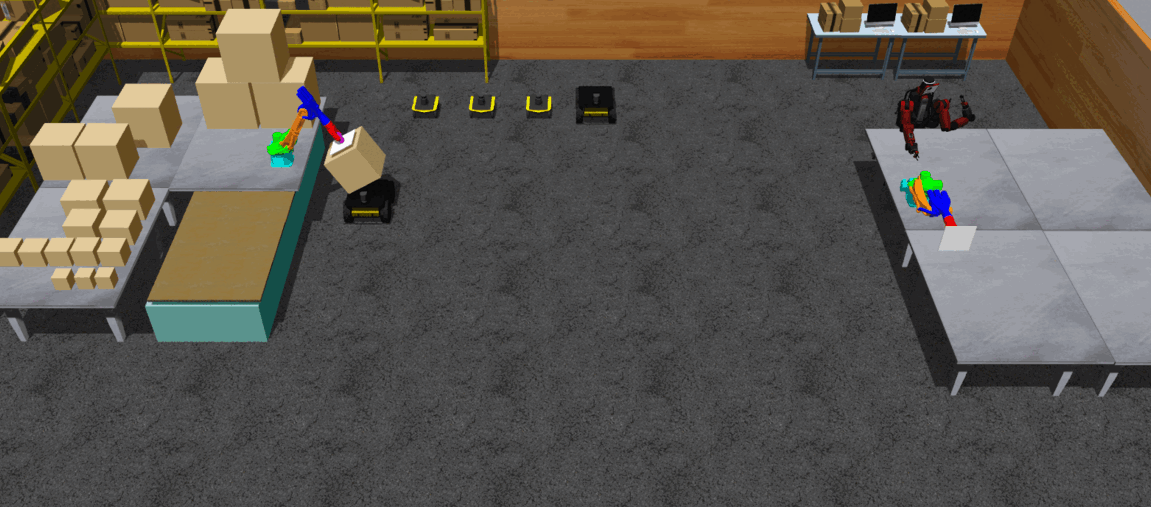 ICRA
ICRA
Collaborative Scheduling with Adaptation to Failure for Heterogeneous Robot Teams
International Conference on Robotics and Automation (ICRA), Under Review, 2023
Collaborative scheduling is an essential ability for a team of heterogeneous robots to collaboratively complete complex tasks, e.g., in a multi-robot assembly application. To enable collaborative scheduling, two key problems should be addressed, including allocating tasks to heterogeneous robots and adapting to robot failures in order to guarantee the completion of all tasks. In this paper, we introduce a novel approach that integrates deep bipartite graph matching and imitation learning for heterogeneous robots to complete complex tasks as a team. Specifically, we use a graph attention network to represent attributes and relationships of the tasks. Then, we formulate collaborative scheduling with failure adaptation as a new deep learning-based bipartite graph matching problem, which learns a policy by imitation to determine task scheduling based on the reward of potential task schedules. During normal execution, our approach generates robot-task pairs as potential allocations. When a robot fails, our approach identifies not only individual robots but also subteams to replace the failed robot. We conduct extensive experiments to evaluate our approach in the scenarios of collaborative scheduling with robot failures. Experimental results show that our approach achieves promising, generalizable and scalable results on collaborative scheduling with robot failure adaptation.
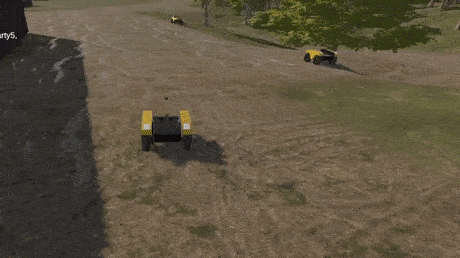 ICRA
ICRA
Decentralized and Communication-Free Multi-Robot Navigation through Distributed Games
International Conference on Robotics and Automation (ICRA), Under Review, 2023
Effective multi-robot teams require the ability to move to goals in complex environments in order to address real-world applications such as search and rescue. Multi-robot teams should be able to operate in a completely decentralized manner, with individual robot team members being capable of acting without explicit communication between neighbors. In this paper, we propose a novel game theoretic model that enables decentralized and communication-free navigation to a goal position. Robots each play their own distributed game by estimating the behavior of their local teammates in order to identify behaviors that move them in the direction of the goal, while also avoiding obstacles and maintaining team cohesion without collisions. We prove theoretically that generated actions approach a Nash equilibrium, which also corresponds to an optimal strategy identified for each robot. We show through extensive simulations that our approach enables decentralized and communication-free navigation by a multi-robot system to a goal position, and is able to avoid obstacles and collisions, maintain connectivity, and respond robustly to sensor noise.
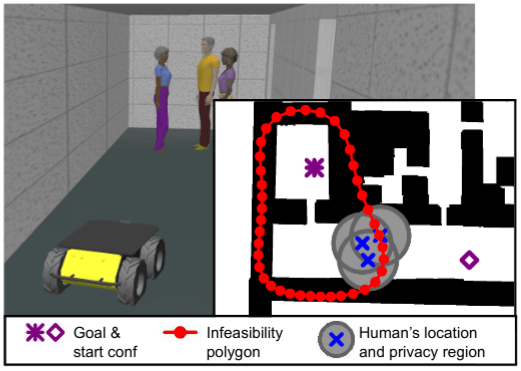 RAL
RAL
Command Rejection in Privacy-Sensitive Contexts: An Integrated Robotic System Approach
Submitted to: ACM/IEEE International Conference on Human-Robot Interaction (HRI), 2023
We explore how robots can consider privacy concerns during navigation tasks and reject navigation commands that cannot be achieved on privacy grounds. We present an integrated robotics approach to this problem, which combines a language-capable cognitive architecture (for recognizing intent behind commands), an object- and location-based context recognition system (for identifying the locations of people and classifying the context in which those people are situated) and an infeasibility proof-based motion planner (for identifying when commands cannot be achieved on the basis of contextually mediated privacy concerns). The behavior of this integrated system is validated using a series of experiments in a simulated medical environment.
Fieldwork
The most exciting research topics are the ones that are inspired by challenging real-world problems. I firmly believe that quality research comprises novel ideas paired with efficient algorithms fully implemented and rigorously evaluated in real-world environments. As my research revolves around robot learning and adaption during safety- and time-critical applications in a variety of novel and unstructured environments, I have constantly applied my research for various robotic applications in harsh environments, most notably at the Edgar experimental mine and the US Army Robotics Research Collaborative Center (R2C2). Collecting data, rigorous testing, and troubleshooting learning-based methods in such environments have always helped me understand the shortcomings of the current society and paved a path for novel machine learning and artificial learning methods for real-world robotic applications.Some images from our fieldwork on Autonomous Navigation, Visual SLAM, and Adaptive Navigation. Check out my fieldwork page for more on our experiments and robot setups.
In The Press
My research over time at the Colorado School of Mines has been featured in the following media channels.| CGTN |
Engineers Develop Robots that are able to do Dangerous Jobs"Every day it seems, robots acquire new capabilities. The robotics field continues to evolve rapidly. Now, robots are starting to go underground to explore mines, caves and tunnels that can be pretty dangerous to humans." We are developing a team of autonomous and collaborative ground and aerial robots for underground and field reconnaissance. |
| Associated Press |
Robots Might Help Prevent Toxic Mine Spills"Crumbling mine tunnels awash with polluted waters perforate the Colorado mountains, and scientists may one day send robots creeping through the pitch-black passages to study the mysterious currents that sometimes burst to the surface with devastating effects." |
| CNET |
Watch a Spot Robot Explore an Old MineWe brought our robotic dog Spot from Boston Dynamics to the Edgar Mine for testing its out-of-box capabilities. This initial testing was featured by CNET: "The ground is rocky and uneven. Old, rusted rails that used to carry loads of precious metals run the length of the path. Most wheeled robots would have trouble navigating this uneven surface, but it's not a problem for Spot." |
Contact
Sriram Siva
Department of Computer Science
Colorado School of Mines
Email: sivasriram@mines.edu
Brown Hall 280I
1610 Illinois Street
Golden, CO 80401
